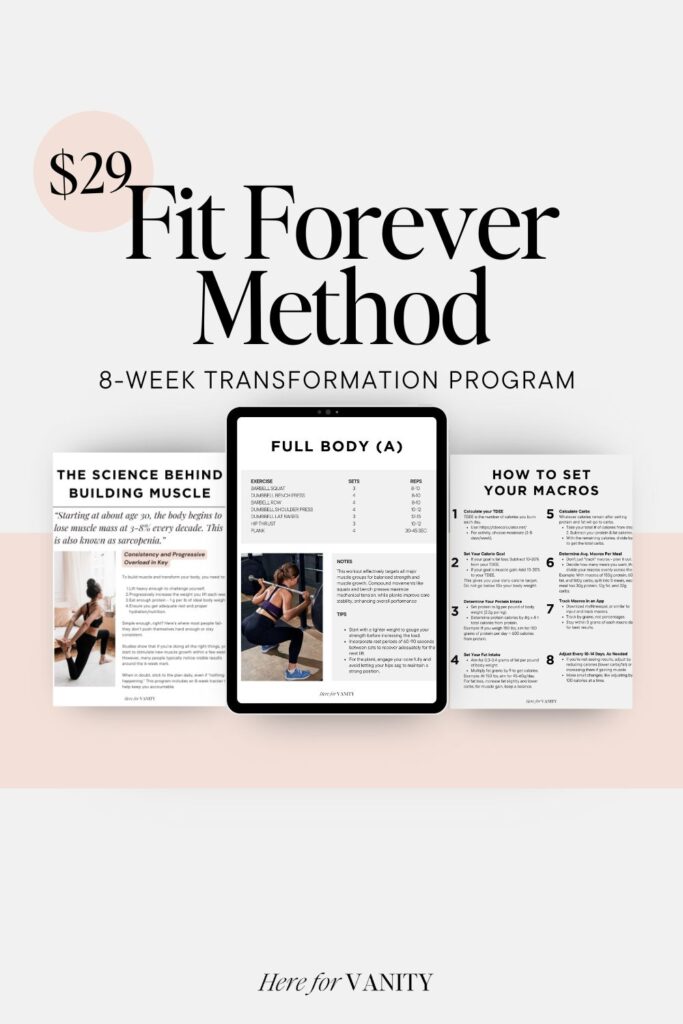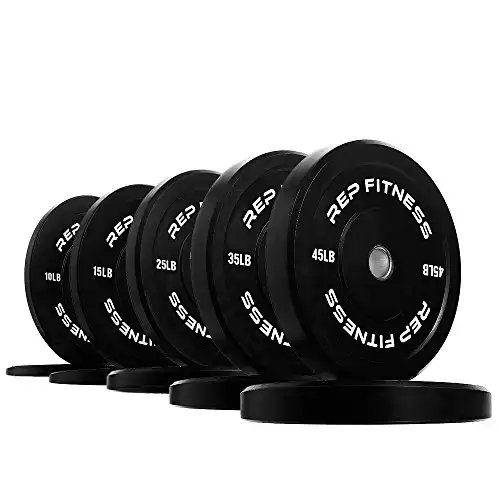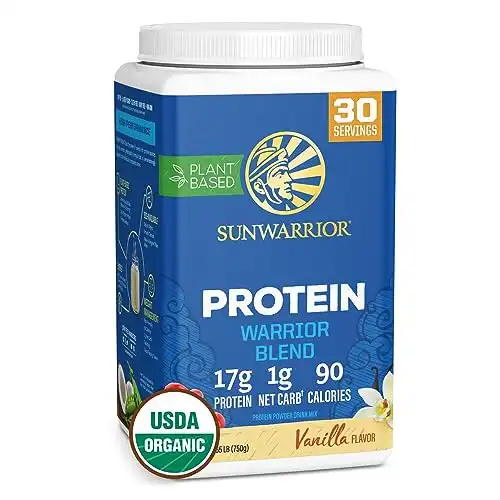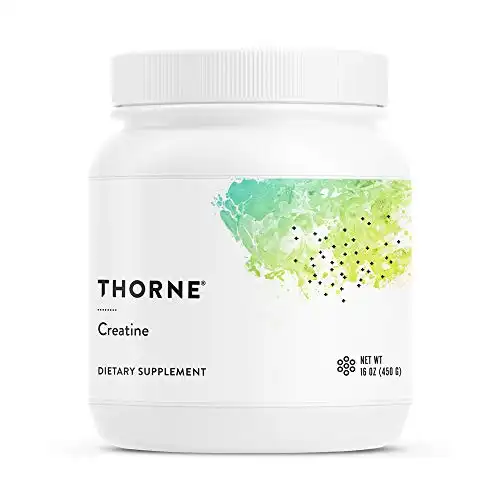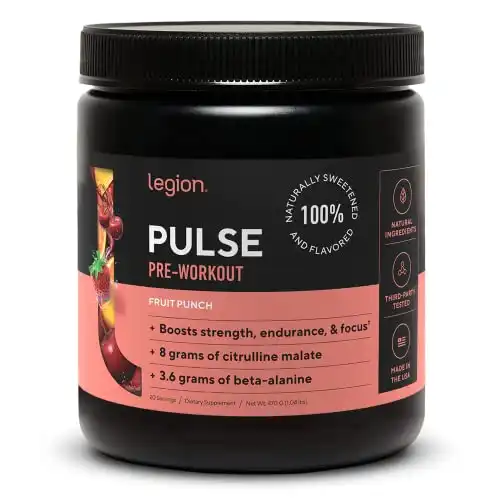Building Muscle After 40 to Unlock Anti-Aging Benefits
This article will give you the right strategies for building muscle after 40.

This post may contain affiliate links. This means I may earn a small commission if you purchase a product through my link at no extra cost to you. All items are carefully curated by me and reflect my honest opinion.
Body Composition Changes After 40
If you feel like your body is changing after 40, you’re not imagining it.
That means by the time you’re 40, you’ve likely lost a bit of muscle, your body composition has changed, and you’ve seen an increase in body fat.
Women over 40 also find themselves grappling with the beginning stages of perimenopause, hormonal fluctuations, and a slowing metabolism.
Not only does this impact how our body looks aesthetically, but also our health and longevity.
So what’s the fix?
Lift weights and build muscle.
The more muscle mass the body has, the more strength and endurance it has and the leaner you’ll look.
Why Building Muscle After 40 Is Important for Anti-Aging
Think of building muscle as the fountain of youth. Not only does it help to counteract the effects of muscle loss and maintain physical strength and functionality, but it also significantly improves our overall health and well-being as we age.
When we build muscle, we can counteract the effects of sarcopenia and help preserve our overall health and vitality as we age.
Benefits of Building Muscle After 40
You’ll look better
In terms of anti-aging, building muscle can also help to improve our physical appearance.
By increasing muscle mass, we will increase metabolism, which can reduce body fat and create a more toned and defined physique, which can help combat the natural loss of skin elasticity and firmness that comes with aging.
You’ll reduce your risk of chronic disease
Building muscle can improve our metabolism, maintain a healthy body weight, and reduce the risk of diseases such as diabetes and heart disease.
You’ll increase bone density
Age-related changes, lack of exercise, and inadequate nutrition gradually decrease bone mass by 1% annually after age 40.
When your bones are weak, you’re more susceptible to fractures and falls.
Building muscle can help improve our bone density, reducing the risk of fractures and osteoporosis.
Your brain will work better
Building muscle after 40 has been shown to improve cognitive function.
Regular exercise stimulates blood flow to the brain, which helps grow new neurons and enhances cognitive abilities such as memory and problem-solving skills.
You’ll feel better
Building muscle can also help to improve our mental and emotional well-being.
By incorporating regular strength training and muscle-building activities into our routine, we can feel good for years.
So what’s the catch?
Nothing.
But building muscle is hard – especially after 40.
It takes the right combination of training, nutrition, and recovery to make it happen.
However, building and maintaining muscle even after age 40 is possible, unlocking a slew of anti-aging benefits.
How to Build Muscle After 40

First and foremost, it is essential to understand that building muscle after 40 requires a different approach compared to when we were in our younger years.
Our bodies may not respond as quickly or effectively to traditional methods of muscle building, and our recovery time may also be slower.
Therefore, adopting a more strategic and patient approach to building muscle in our 40s and beyond is important.
Building muscle after 40 can be challenging, but it is not impossible. With the right strategies and dedication, it is definitely achievable.
Here is exactly how to build (and maintain muscle) after 40.
01 | Develop a Consistent Training Routine
Find or create a strength training routine that works for you.
This doesn’t mean you need to train five days a week, but developing a steady, consistent workout routine is key to ensuring that strength gains are sustainable.
Would you expect to see results after one strength workout? Of course not. Results come when you show up every week – consistently.
Choose a training schedule that allows you to work on each major muscle group at least twice a week and stick to it.
An example schedule could be four days a week: Upper/Lower/Upper/Lower or three Full-Body workouts each week.
It’s important to remember that consistency doesn’t mean you have to train at the same intensity every day. It’s about showing up and putting in the effort on a regular basis.
Consistency over time will significantly improve muscle mass, strength, and endurance. Consistency is what helps you make progress and see results over time.
Some days, you may have a high-intensity workout, while others focus more on recovery or flexibility. The key is to keep moving and stay committed to your fitness journey.
So, whether you are a beginner or a seasoned athlete, make it a priority to train consistently.
Set a schedule, stick to it, and make it a non-negotiable part of your routine.
Your body and mind will thank you for it, and you will see the benefits of your efforts in the long run.
02 | Choose Compound Exercises

When incorporating strength training into your workout routine, focus on compound movements that work multiple muscle groups together, such as squats, deadlifts, bench presses, and pull-ups.
These compound exercises are highly effective for building strength and muscle mass. They will also help increase your overall fitness and function.
Compound exercises are great because they provide a solid workout in less time (and give a cardio boost too).
Even at home, you can do squats, deadlifts, lunges, push-ups, chest presses, and back rows with a set of dumbells or bar and bumper plates.
03 | Lift Heavy Weights & Focus on Progressive Overload
Most women don’t lift heavy enough.
We’re conditioned to think that weight training will make us “bulky” and that we must lift lighter weights to appear “toned.”
This is ridiculous.
To stimulate muscle growth, your training must be challenging and include some form of progressive overload. This means you need to gradually increase the demands on your muscles over time.
Whether you add more weight, increase the number of sets/reps, or increase the intensity of your workouts, your muscles need to be progressively challenged to keep growing.
When you first start working out, your body is not used to the stress of exercise, and you may see quick gains in muscle strength and size.
However, as your body adapts to the level of resistance you are using, those gains will start to slow down.
This is where progressive overload comes in. In order to keep seeing improvements, you need to continually increase the intensity of your workouts in a systematic and controlled manner.
By consistently challenging your muscles with increased resistance, you will continue to become stronger and leaner.
04 | Eat Enough Protein
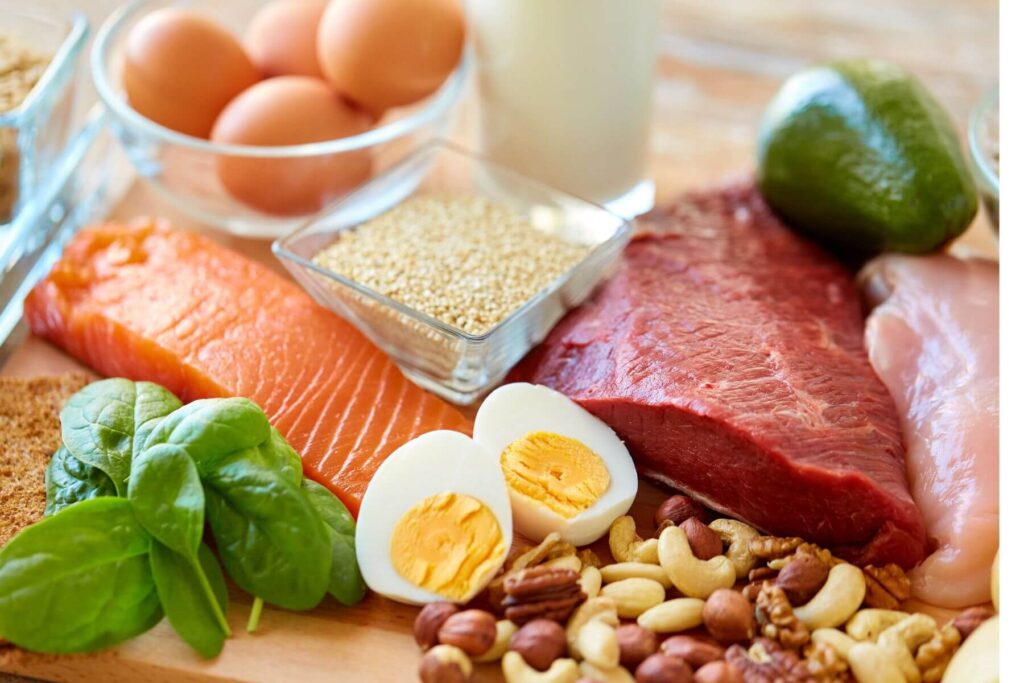
Building muscle after 40 requires a protein-rich diet to support muscle growth and repair.
Adequate protein intake is important for building and repairing tissues, making enzymes and hormones, and maintaining healthy muscles and bones.
Many online macro calculators can help define your optimal protein amount. Still, a good rule of thumb is to aim for a daily protein intake of about 1 gram per pound of body weight for muscle growth.
Your protein should come from various sources, including lean meat, dairy, legumes, and plant-based proteins.
My favorite whole-food protein sources I always have on hand include:
- Eggs
- Egg Whites
- Greek Yogurt
- Chicken
- Bison or Grass Fed Beef
- Salmon and Smoked Salmon
- Black Beans
Whole-nutrient foods are best when possible, but supplementing with protein powder is a great option, too.
There are tons of protein powder options on the market – find one that suits you. You can add protein powder to nearly anything: smoothies, oatmeal, hot chocolate, and even baked goods to boost your protein intake.
I try to get most of my protein earlier in the day, so I start with a protein shake made with protein powder, berries, egg whites, coconut milk, collagen, and greens. It has at least 30 grams of protein and keeps me sustained until lunch.
Technically, for muscle growth to occur, you need a calorie surplus and enough protein. If you’re not getting enough protein, it’s likely you’re not getting the fuel to build and sustain muscle.
When you’re trying hard to build muscle, consider tracking your protein intake with an app like MyFitnessPal.
I often ignore calories and other macros and use the app to track my protein intake to ensure I’m hitting my 1g per body weight.
Related: How to Count Macros the Easy Way: Complete Beginner’s Guide
05 | Get Adequate Recovery

Muscle growth occurs during periods of rest, not during workouts. As we age, our bodies take longer to recover from intense workouts, so give yourself adequate time to rest and recuperate.
Make sure to give yourself rest days between intense workouts to give your muscles time to recover and repair.
Incorporating stretching, yoga, and massage can also assist in recovery and reduce the risk of injury.
Recovery is often overlooked but is essential to overall health and performance. So be sure to schedule rest days and listen to your body.
There have been times when I’ve been on week 8 of a training program that included intense workouts 5x a week, and I’ve felt irritable, tired, and sore. That was a big indicator that I needed more rest and was likely overtraining.
I personally like to incorporate at least two full rest days during the week. And, after several weeks of training, I’ll take a whole week off to rest.
06 | Get Enough Sleep

Quality sleep is non-negotiable when it comes to muscle growth and overall health, especially for women over 40.
Quality sleep is a priority, even if you need to sacrifice a training day.
During sleep, our bodies can repair and rejuvenate themselves, strengthening the immune system, allowing strength gains, and promoting overall physical health.
Lack of sleep has been linked to an increased risk of chronic conditions such as heart disease, diabetes, and obesity.
Not getting enough sleep can also negatively impact hormone levels, interfering with muscle growth and recovery.
Aim for at least 7 hours of sleep each night to allow your body and muscles to rejuvenate and heal.
Prioritizing sleep is essential for overall health, well-being, and muscle growth.
07 | Reduce Stress
Easier said than done, right?
Women over 40, especially, are feeling overwhelmed and exhausted.
Work stress, due dates, errands, family, and other obligations… there is no shortage of sources of stress that can leave us feeling overwhelmed and exhausted.
Managing stress and hormones is crucial for building muscle after 40.
The hormone cortisol, often called the “stress hormone,” can have catabolic effects on muscle tissue.
One of the most effective ways to reduce stress is through relaxation techniques such as meditation and yoga. Incorporating stress-relieving activities will help to maintain an anabolic (muscle-building) state.
Another important way to reduce stress is by prioritizing self-care. This includes getting enough sleep, eating a healthy diet, and engaging in regular physical activity.
When we take care of ourselves, we are better equipped to handle the challenges that come our way and less likely to feel overwhelmed by stress.
While it may not be possible to eliminate stress, there are many ways to reduce its impact and build that muscle effectively.
Related: 9 Practical Ways to Naturally Lower Cortisol Levels
08 | Consider Supplements (Especially Creatine)
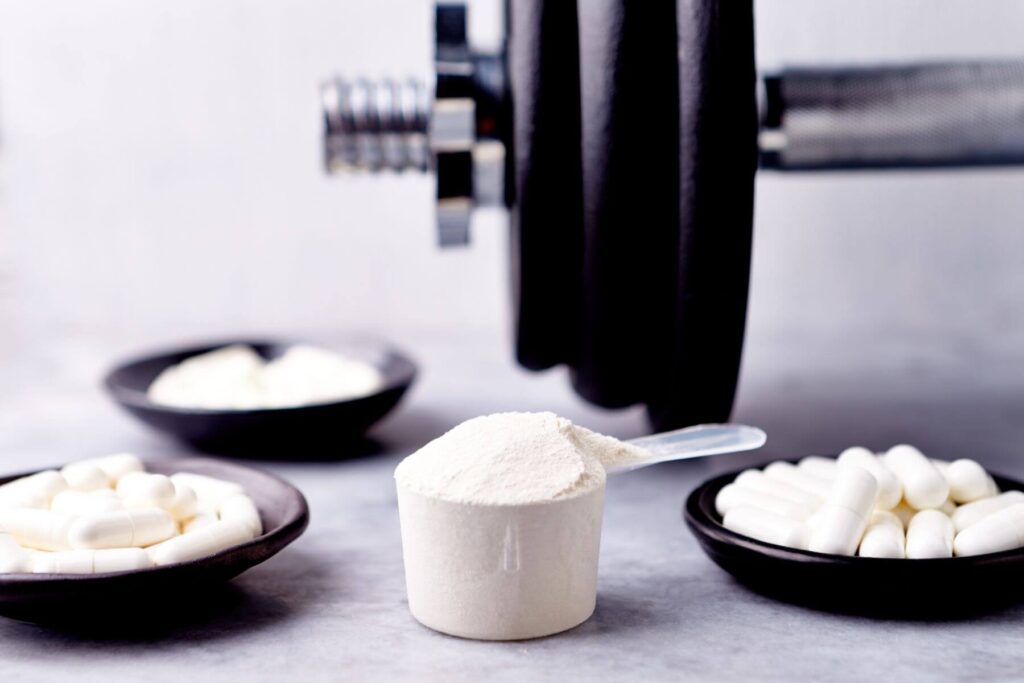
You do not need supplements to build muscle, but it doesn’t hurt.
However, certain supplements, including protein powder, creatine, and branched-chain amino acids, may support muscle growth when combined with a balanced diet and training program.
If I were to recommend any supplement for building muscle over 40, it would be creatine.
I notice a significant difference in my strength when taking 5g of creatine daily.
Creatine increases the availability of adenosine triphosphate (ATP), the cell’s primary energy currency.
For women over 40, adding creatine to their supplement regimen can help enhance performance. It allows us to train harder and longer, contributing to greater muscle gains.
While supplements can be beneficial, they are not necessary. You can absolutely build muscle without them.
Final Thoughts on Building Muscle After 40

Finally, patience and consistency are key.
Building muscle after 40 takes time and dedication, so staying committed to your fitness goals, even when motivation wanes, will get you results.
By prioritizing strength training, paying attention to nutrition, prioritizing recovery and rest, and staying consistent, it is possible to build and maintain muscle mass well into your 40s and beyond.
My Favorite Products for Building Muscle After 40
These are some of my absolute favorite products I always go to when I’m trying to build muscle. Click the pictures for a direct link to Amazon.
Ready to Build Muscle and Stay Fit for Life?
Join the Fit Forever Method and Transform Your Body in Just 8 Weeks!

